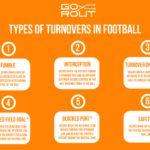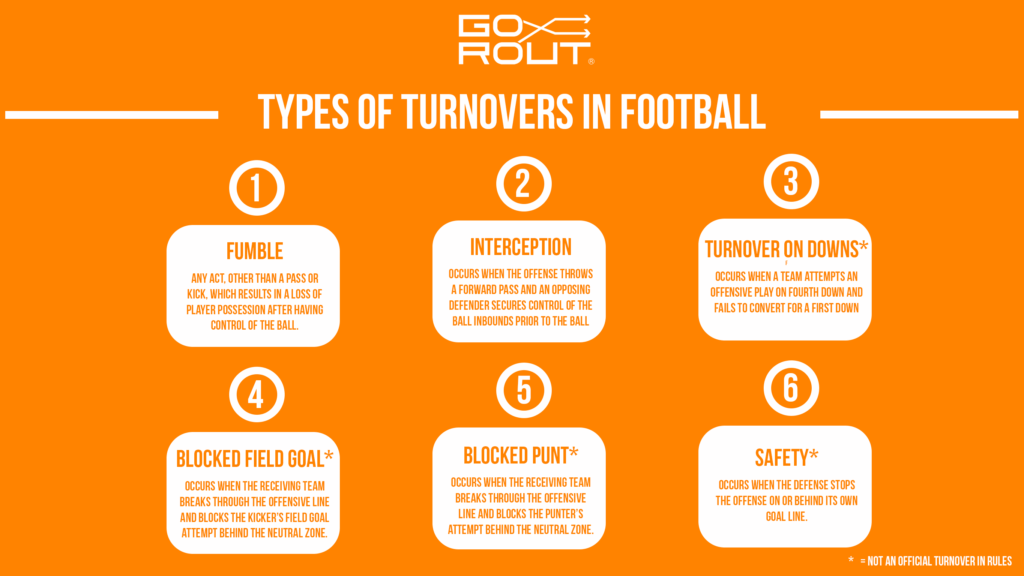Understanding the Football Route Tree
Reading Time: 6 minutes
Reading Time: 6 minutes
A precise strategy is key to success in football. One essential component that helps players and coaches achieve precision is the football route tree. This structured diagram of passing routes serves as a fundamental tool for designing plays and ensuring clear communication between quarterbacks and receivers. Understanding the football route tree is crucial for any team aiming to excel in their offensive game plan.
What is the Football Route Tree?
The football route tree is a visual representation of the various routes a receiver can run during a passing play. Each route is assigned a number and a name, creating a “tree” of options that can be combined to create diverse and unpredictable play designs. The routes in the tree are standardized, allowing for consistency and clarity in play-calling and execution.
By using the football route tree, quarterbacks and receivers can develop a shared language, ensuring they are on the same page when a play is called. This shared understanding is vital for timing and accuracy, as even a slight miscommunication can result in an incomplete pass or, worse, an interception.
Breaking Down Each Branch of the Football Route Tree
Flat Route
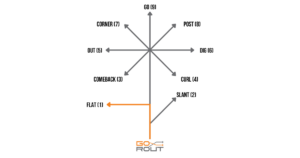
The flat route, often referred to as the “1” route, involves the receiver running a short, quick route toward the sideline. This route is typically used to exploit the defense’s underneath coverage, providing a safe and easy target for the quarterback.
Slant Route
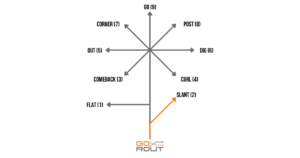
The slant route, or “2” route, has the receiver take a few steps forward before cutting sharply across the middle of the field. This quick-hitting route is designed to take advantage of the defense’s inside coverage and is often used in short-yardage situations.
Comeback Route

The comeback route, labeled as the “3” route, sees the receiver sprint downfield before turning back sharply toward the sideline. This route is effective against deep coverage, as it creates separation by forcing the defender to overcommit.
Curl Route

The curl route, also known as the “4” route, involves the receiver running downfield before stopping abruptly and turning back toward the quarterback. This route is designed to find a soft spot in zone coverage, providing a reliable option for the quarterback.
Out Route
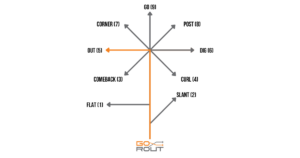
The out route, or “5” route, has the receiver running straight downfield before breaking sharply toward the sideline. This route is effective for gaining yardage near the sidelines and is often used in two-minute drills.
Dig Route

The dig route, also called the “6” route, involves the receiver running downfield and then cutting sharply across the middle of the field. This deeper version of the slant route is used to exploit gaps in the defense’s intermediate coverage.
Corner Route
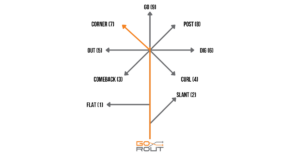
The corner route, labeled as the “7” route, sees the receiver sprinting downfield before angling toward the corner of the end zone. This route is effective against both man and zone coverage, providing a deep option for the quarterback.
Post Route

The post route, or “8” route, has the receiver running downfield and then angling toward the goalpost. This route is designed to attack the deep middle of the field, creating opportunities for big plays.
Go Route
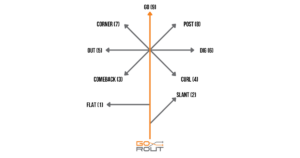
The go route, also known as the “9” route, involves the receiver sprinting straight downfield as fast as possible. This route is used to stretch the defense vertically, often called when a long completion is needed, or to draw out a safety to create space in underneath coverage.
Designing Plays Using the Football Route Tree
Scheming Open Space in the Defense
Effective play design using the football route tree involves understanding opposing defense’s coverage and scheming to create space. By combining different routes, coaches can manipulate defenders and create mismatches. For example, pairing a short route with a deep route can force defenders to choose between covering the underneath receiver or the deep threat, creating open looks for the quarterback.
Utilizing Player Strengths in Play Design
Another critical aspect of using the football route tree in play design is leveraging the strengths of individual players. Coaches should consider the speed, agility, and ability after the catch for their pass catchers when designing plays. For instance, a fast receiver might create better opportunities by running downfield, while a more physical receiver could be more effective in the short and intermediate areas. Tailoring routes to player strengths can maximize the offense’s effectiveness.
Using the Football Route Tree in a Football Playbook
Starting with a Football Playbook Template
Incorporating the football route tree into a playbook begins with a solid template. Coaches can use the free GoRout football playbook template to build the bones of their scheme upon. It includes a number of simple plays that can easily be installed, and endless pages where creativity and ingenuity can take shape. It can be customized to fit any team’s offensive and defensive strategies.
Helping Players Develop Their Routes
Speed and Agility Drills to Improve Skills
To run routes effectively, receivers must develop their speed and agility. Drills that focus on quickness, change of direction, and acceleration can help players execute routes with precision. Cone drills, ladder drills, and sprinting exercises are all valuable for improving the physical skills needed for crisp, efficient route running.
Varying Releases to Create Separation
Creating separation from defenders is essential for successful route running. Teaching receivers to vary their releases off the line of scrimmage can help them avoid being jammed by defenders and create the necessary space to catch the ball. Techniques such as stutter steps, jab steps, and shoulder fakes can all be effective tools in a receiver’s arsenal.
Work with receivers to perfect their stance and starting motions for a variety of releases. The wider their arsenal, the more success they will have beating defenders off the line and separating.
Conclusion About Football Route Tree
The football route tree is a fundamental concept in football that provides a structured framework for designing passing plays and ensuring clear communication between quarterbacks and receivers. By understanding and utilizing the various routes in the tree, coaches can create effective play designs that exploit different coverages and leverage the strengths of their players. Additionally, developing the skills needed to run these routes effectively is crucial for on-field success. Effective coach-to-player communication and continuous practice are key to mastering the football route tree and succeeding in the pass game.
FAQs About Football Route Tree
Q: What is the purpose of the football route tree?
The football route tree standardizes passing routes, allowing for clear communication and effective play design between coaches, quarterbacks and receivers.
Q: How can I incorporate the football route tree into my team’s playbook?
Start with a football playbook template and customize it to fit your team’s offensive strategy and individual player strengths. Start with simple routes and play designs, and gradually introduce greater complexity into plays. Focus on creating space and timely progressions for the quarterback.
Q: What drills can help receivers improve their route running?
Speed and agility drills, such as cone drills and ladder drills, can enhance a receiver’s quickness and change of direction ability. Good footwork allows for varying releases and helps create separation at the line of scrimmage.
Q: Why is effective communication important in using the football route tree?
Clear communication ensures that quarterbacks and receivers are on the same page, reducing the risk of miscommunication and increasing the likelihood of positive yards.

